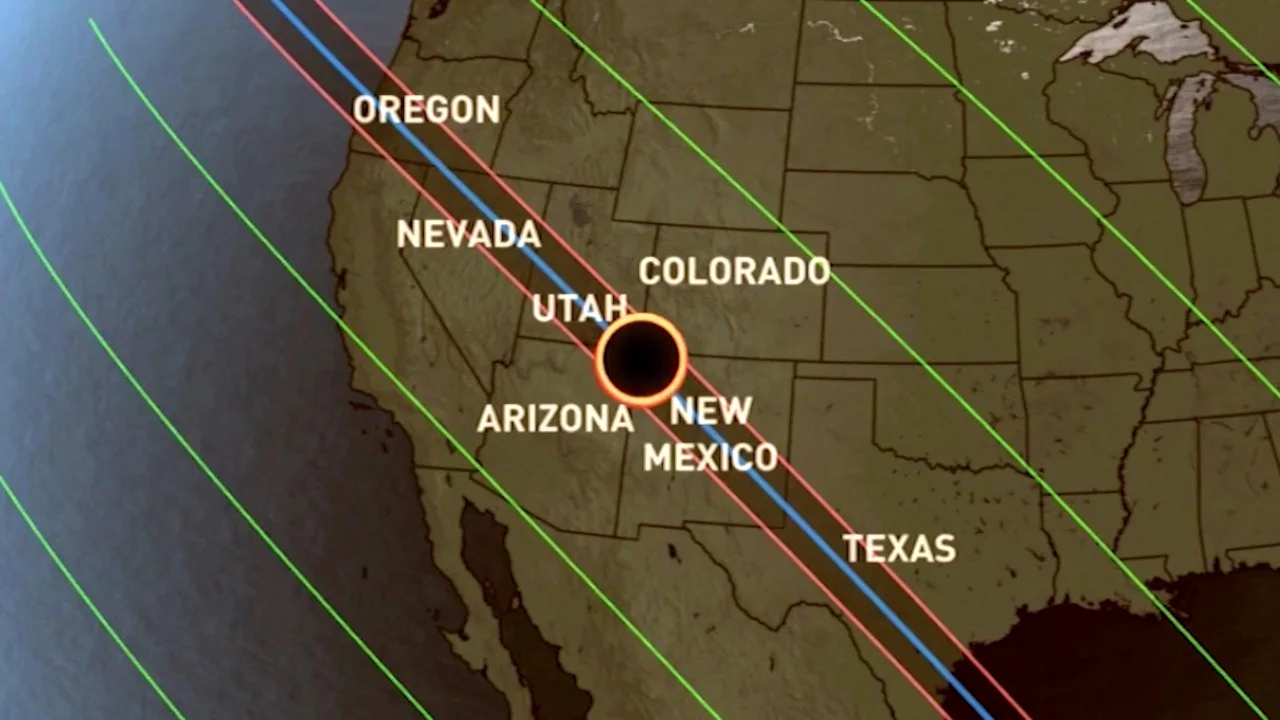
A 'Ring of Fire' solar eclipse happens one year from now. Start planning now!
Have you picked out your spot to watch the next annular solar eclipse?
One year from now, Canadian skywatchers will have a reasonably good view of the next major solar eclipse. However, the best places to see it will be along a thin line through the southwestern United States. Given the popularity of these celestial events, anyone wishing to see it for themselves may want to start planning their trip as soon as possible.
On Saturday, October 14, 2023, find yourself a good place to sit with a clear view of the Sun, slip on your Mylar eclipse-viewing glasses, and look up. Over the course of 3 hours and 40 minutes, the Sun and Moon will put on a spectacular show in the sky as they line up to produce an annular "Ring of Fire" solar eclipse.
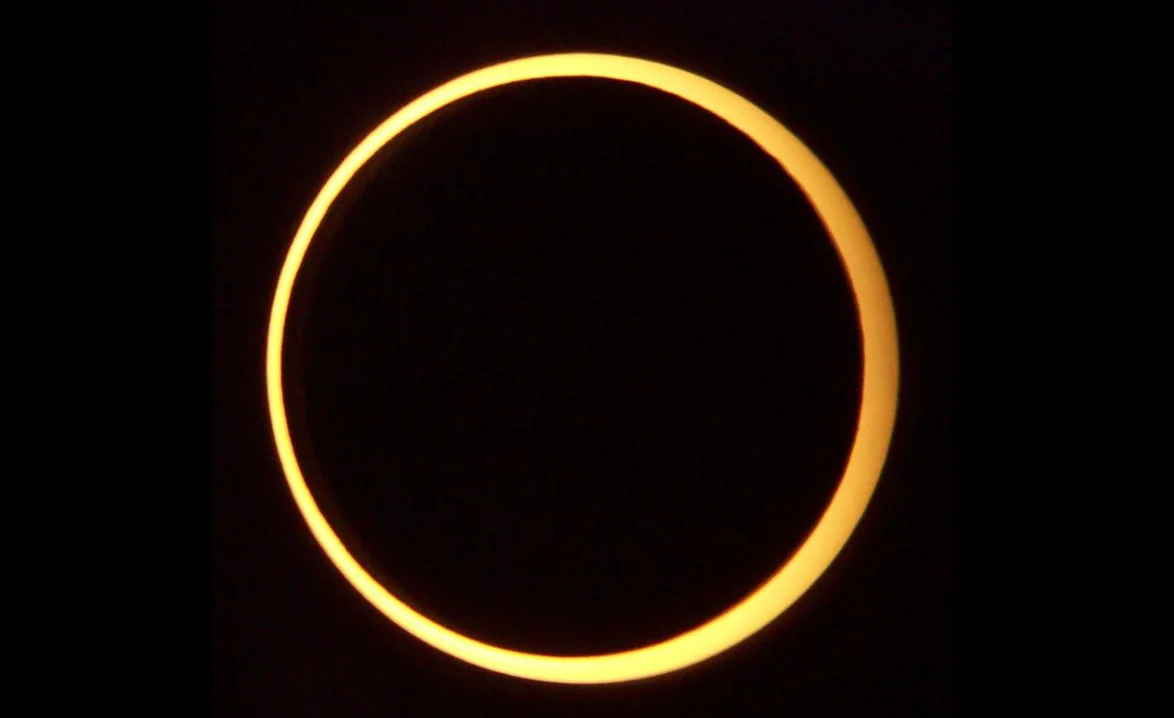
This picture of the May 20, 2012, annular eclipse was captured from Middlegate, Nevada. Credit: Wikimedia user Smrgeog (CC BY-SA 3.0)
From anywhere in Canada, this will only be a partial solar eclipse.
The Moon will cover about 70-80 per cent of the Sun for viewers in southwestern BC, but only 10-20 per cent, as seen from Atlantic Canada.

The best views of the eclipse will be from a roughly 200-km wide path that stretches across the US Southwest, Mexico's Yucatan Peninsula, Guatemala, Belize, Honduras, Nicaragua, Costa Rica, Panama, Colombia, and Brazil.
The closest portion of this path for Canadians crosses Oregon, Nevada, Utah, Colorado, Arizona, New Mexico, and Texas.
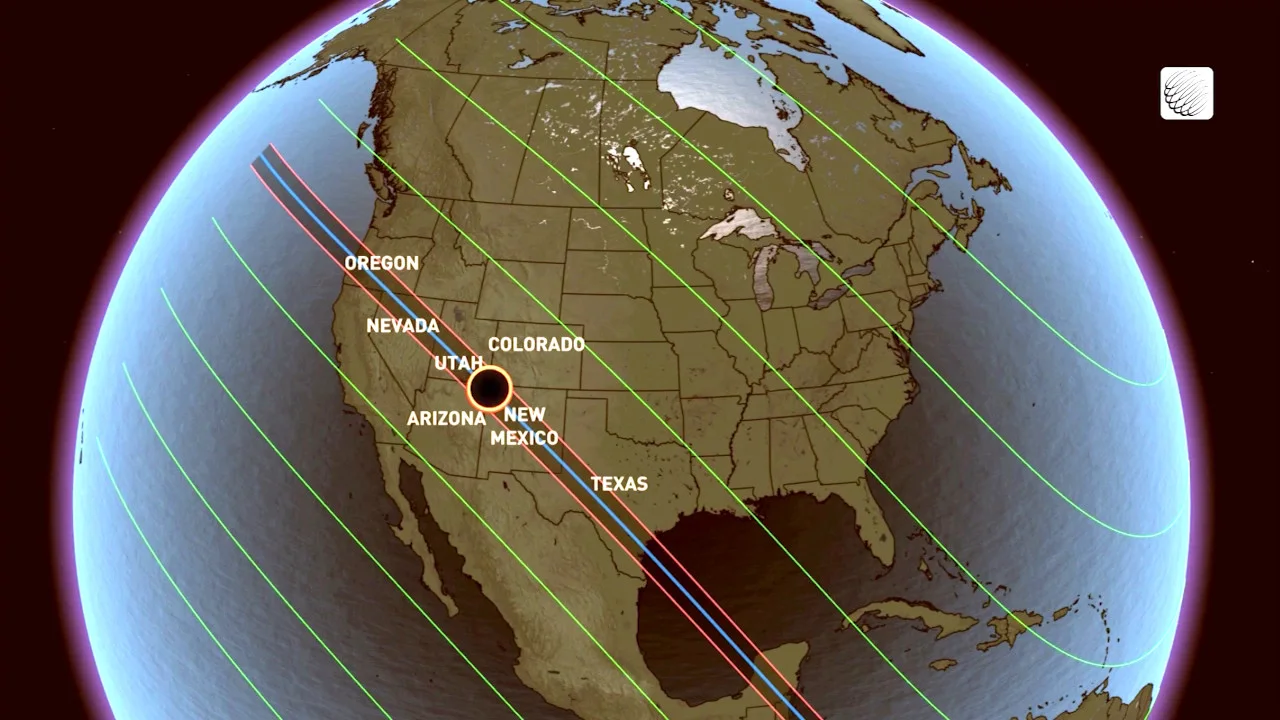
As the shadow of the Moon sweeps across the face of the Earth, it only takes around 40 minutes to complete its pass over the United States. So, viewers along the path of the maximum eclipse will need to be ready.
In Oregon, the eclipse begins shortly after 8 a.m. PDT, with the full Ring of Fire visible starting around 9:18 a.m. PDT and lasting for around four and a half minutes. Meanwhile, viewers in Texas will see the eclipse begin around 10:20 a.m. CDT, and the Ring of Fire will be visible between 11:45 a.m. to 12:00 p.m. CDT for roughly four minutes and fifty seconds.
What's going on here?
Solar eclipses come in four forms — partial, annular, total, and hybrid. Which of these we see during any event depends on three factors:
the path the Moon takes as it crosses the face of the Sun,
where the viewer is on Earth, and
how far the Moon is from Earth at the time.
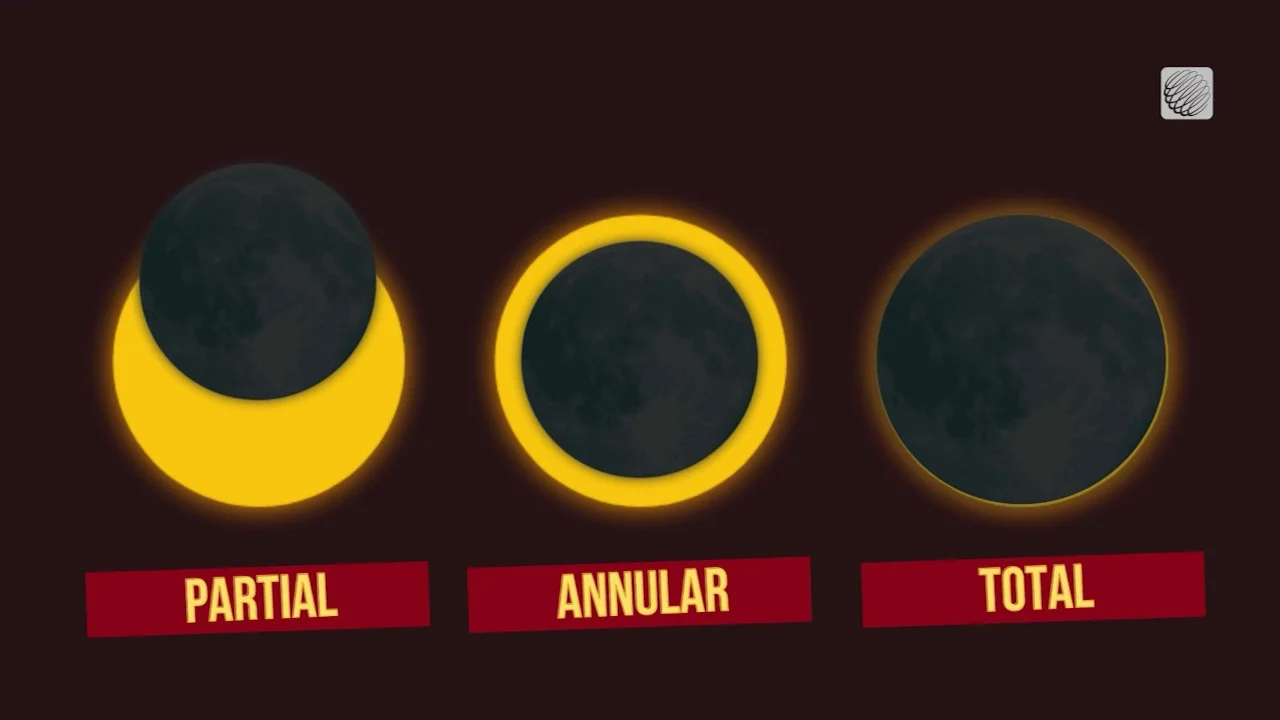
This infographic shows the three most common forms of solar eclipse. The rarer 'hybrid' eclipse occurs when the eclipse changes between annular and total during the event.
If the path of the Moon is offset to one side or the other from the Sun's centre, it only covers up part of the Sun's disk, and we see a partial eclipse. This is also what anyone not along the path of maximum eclipse sees during an annular or total eclipse. Thus, partial eclipses are probably the most common type seen.
Total and annular eclipses happen when the Moon passes directly in front of the Sun. The Moon's distance sets them apart. When the Moon is closer to Earth in its orbit, it appears large enough to cover the entire disk of the Sun. That's when we see a total solar eclipse. However, when the Moon is farther away in its orbit, it can only cover up most of the Sun, leaving a thin band of the Sun visible around its edge. That results in an annular solar eclipse, often called a "ring of fire" eclipse.
April 8, 2024
While planning for next year's ring of fire eclipse, keep in mind that less than six months later, a total solar eclipse will be passing over the eastern half of Canada.
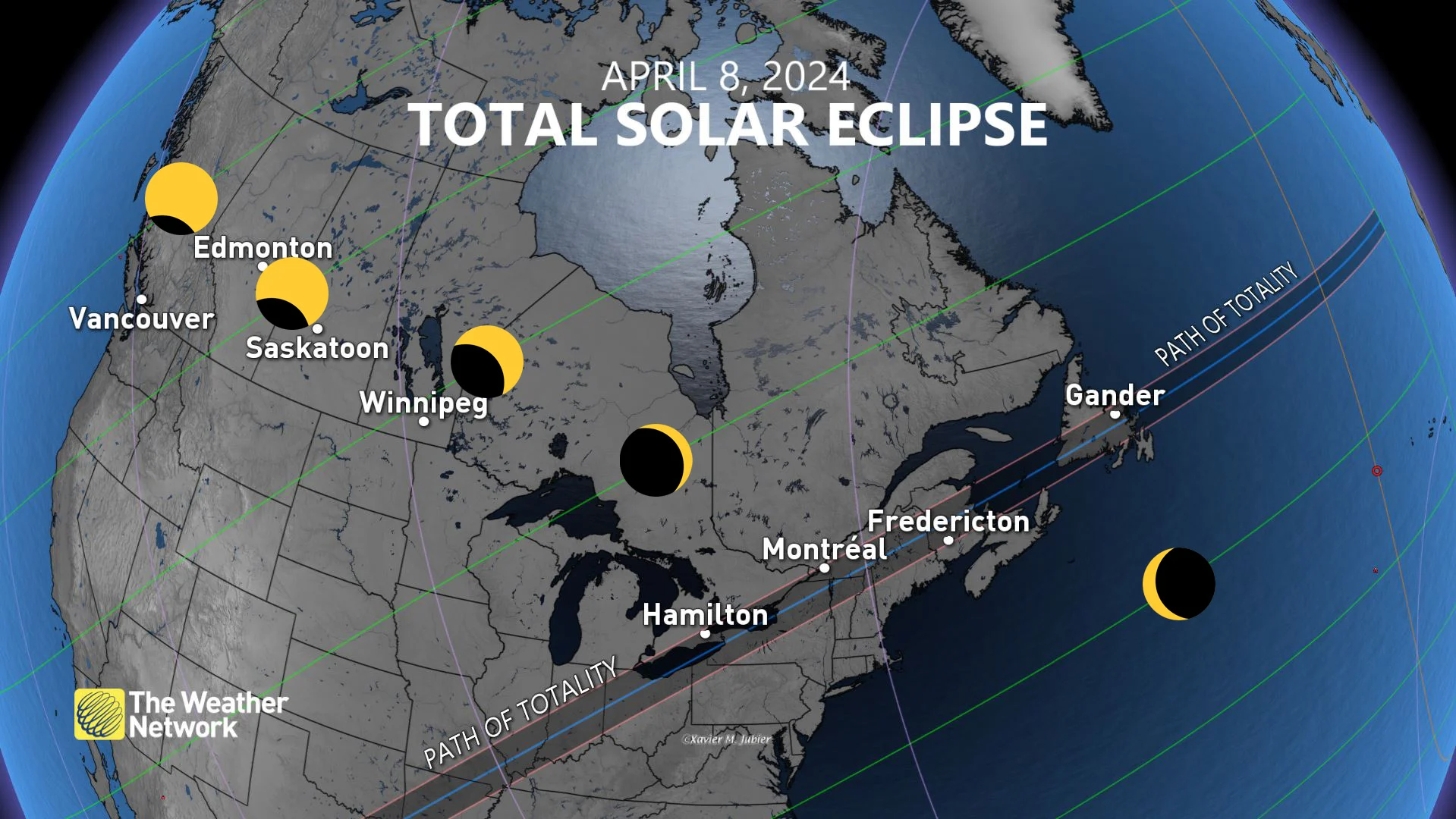
Again, most locations in Canada will only see a partial eclipse during the event.
However, the path of totality for this eclipse will stretch from southwestern Ontario (including Hamilton, St. Catharines, and Niagara Falls), through southeastern Ontario and southern Quebec (passing over Kingston, Cornwall, and Montreal), central New Brunswick (through Frederickton and just north of Moncton), the western half of Prince Edward Island, the northern tip of Cape Breton Island, and central Newfoundland (including Channel-Port aux Basques and Gander).
Although there are two or three solar eclipses each year, we should make the best out of these next two events. At least for the next decade or two, most eclipses visible from Canada will be partial ones (unless you travel to the Arctic).
According to NASA, the onew to watch for are the total solar eclipse across Western Canada in 2044, a total eclipse similar to the August 2017 event in 2045, and the annular eclipse over eastern Canada in 2048.











